Singapore’s Khoo Teck Puat Hospital prescribes nature
By Michael Casey
In urban environments, we often praise the efforts of designers and planners when the landscape and the built environment merge seamlessly to become one. We enjoy the aesthetics of what greenspaces achieve with grey infrastructure, and even more so when we see evidence of the biodiversity that these green spaces attract. While much focus has been on, for example, apartment buildings and parks within dense urban settings, there hasn’t been as much focus on integrating green and grey infrastructure into health facilities and settings.
The recent Australian Institute of Horticulture garden tour of Singapore visited the famous Khoo Teck Puat Hospital, also known as the ‘hospital in a garden’. This hospital is a 550-bed general and acute care hospital located at Yishun in Singapore and covers 3.5ha.
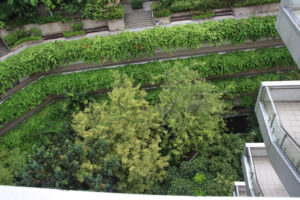
The hospital has created a ‘healing environment’. This means that the healing environment has been established through the effective use, and integration, of the hospital’s inner and outer spaces of the building. The objective of the healing environment from a design and planning perspective was to remove the ‘coldness’ or clinical aesthetics and become a model for environmental conservation by reducing the carbon footprint, and to also create community involvement through volunteerism and placemaking.
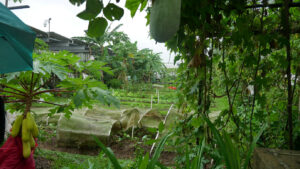
To address the traditional clinical impact that hospitals can have on patients, staff and visitors, the designers set out to incorporate biophilic design principles during the design phase to achieve the outcomes we see today. This involved the use of environmental features, natural shapes and forms, natural patterns and processes, light and space, place-based relationships and evolved human-nature relationships.
The hospital boasts a 3.92 Green Plot Ratio with the total surface area of horizontal and vertical greenery being almost four times the size of the land the hospital occupies. The green spaces occupy the central courtyards all the way through to upper levels of the balconies and then drape back down through the open basement area. Throughout the upper balconies, patients can visually experience nature where plants grow either up facades or in planters spaced around these terraced locations. Water features throughout the hospital are not only a visual benefit but attract birds and butterflies, and create a biodiversity not usually seen in these environments. Coupled with this is the use of the Yishun Pond. It was once a bare stormwater collection pond and is now transformed into a lush water garden that serves as a filtration pond that stores, cleans and reuses water for the main hospital ornamental ponds throughout the hospital gardens. Yishun Pond is not only a natural connection to the hospital gardens but a significant part of how the hospital uses and conserves water while maintaining these opulent tropical gardens. The healing environment has become an attraction in its own right, not only for patients and staff but also as a destination for neighboring residents and office workers.
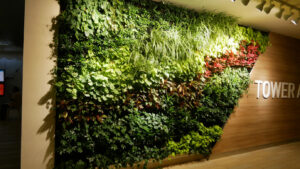
The healing environment seeks to inspire visitors to use the spaces around the hospital building which provides a ‘platform’ for patients to spend time with their families outside of a traditional hospital ward and bed. It’s well documented that patients recover faster when exposed to nature and greener environments during their stay/period of care, and this hospital is the pinnacle of exactly that.

Creating these community spaces is a fundamental concept of placemaking and the hospital achieves this with the pond and its surrounds. Study, exercise, play and workspaces are all created around the inspiring gardens and pond which have become valuable for staff, patients, visitors and neighboring communities to use for passive and active activities all while enjoying their connection to nature. A recent study revealed that 15% of visitors to the healing environment are there for recreation (as opposed to visiting patients for example). It’s no wonder that this hospital has become a location of choice, as the effectiveness of the healing environment means that you lose all sense of the feeling of being within the grounds of a functioning hospital.
The hospital and its careful design principles stretch well beyond grounds and gardens. Inside the building, biophilic principles have been adopted to assist with ventilation and lighting. This means that patient rooms, hallways, lobbies and public corridors were all designed for natural ventilation and lighting, reducing the need for artificial lighting and ventilation and the high ceilings in the main lobbies allow for natural ventilation and cooling before getting out into the much cooler garden spaces. The use of the large main lobby has also acted as a space for school performances, exercise classes and dance sessions which are all intended to promote health and wellbeing along with providing education around living a healthy life.
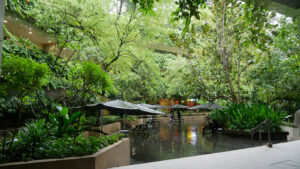
There is also a rooftop farm that extends far beyond offering spaces for recreational purposes. The rooftop space came about when the rooftop was offered to local farmers who had been displaced from their small community farms. Yishun, once an agricultural town, has many of the older generation displaced from their original professions and the rooftop was a lifeline for many in the community. Now the roof space, managed entirely by volunteers, grows numerous organically-grown crops that provides food for the hospital kitchen and patient consumption, is taken home by the volunteers or sold at the weekly market in the main lobby of the hospital.
With plenty of evidence, through research that highlights the positive outcomes green spaces have on people’s health both physically and mentally, there’s much more to learn and understand on greening our health settings/environments. Evidence demonstrates the benefits of viewing nature scenes and plants, and the positive psychological and physiological changes it has on individuals, such as feeling of calmness, happiness, reduced negative emotions, lower blood pressure and decreased muscle tension. While all these benefits are important for all from a general wellbeing perspective, it would be tremendously advantageous for those that require hospital care to be habitually prescribed ‘green’ as part of their treatment plan.
While patients stand to benefit, so does the hospital in its ability to effectively treat patients who for example, might have suffered serious stress and trauma from being ill. This is where those working in the healthcare profession need to incorporate and embrace green spaces as ‘a matter of course’. This suggests that hospitalisation rates can be reduced, as patients are able to potentially require less medication and treatment, and can recover faster, which in turn can also assist the hospital to have capacity when required most.
Michael Casey
Director of Evergreen Infrastructure and MJC Horticulture,
National President of Australian Institute of Horticulture
Advisor to the green infrastructure industry.
E: michael@evergreeninfrastructure.com.au or
president@aih.org.au

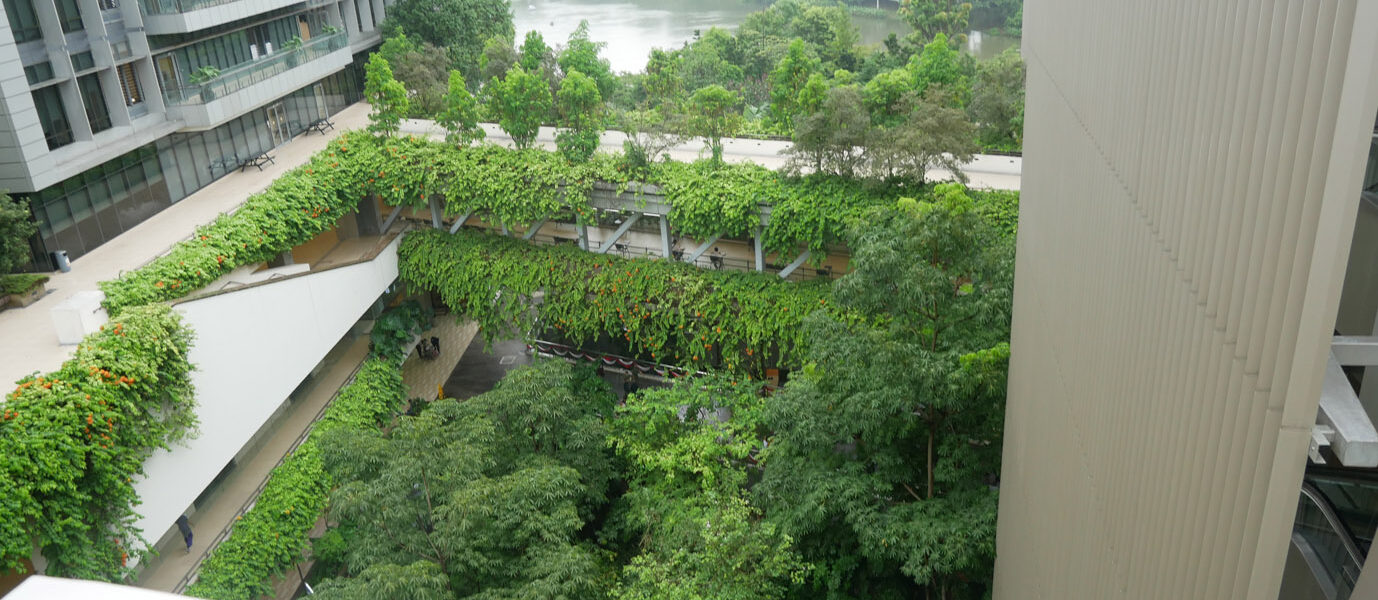
Pingback: New President of the Australian Institute of Horticulture vows to fight climate change - Hort Journal Australia